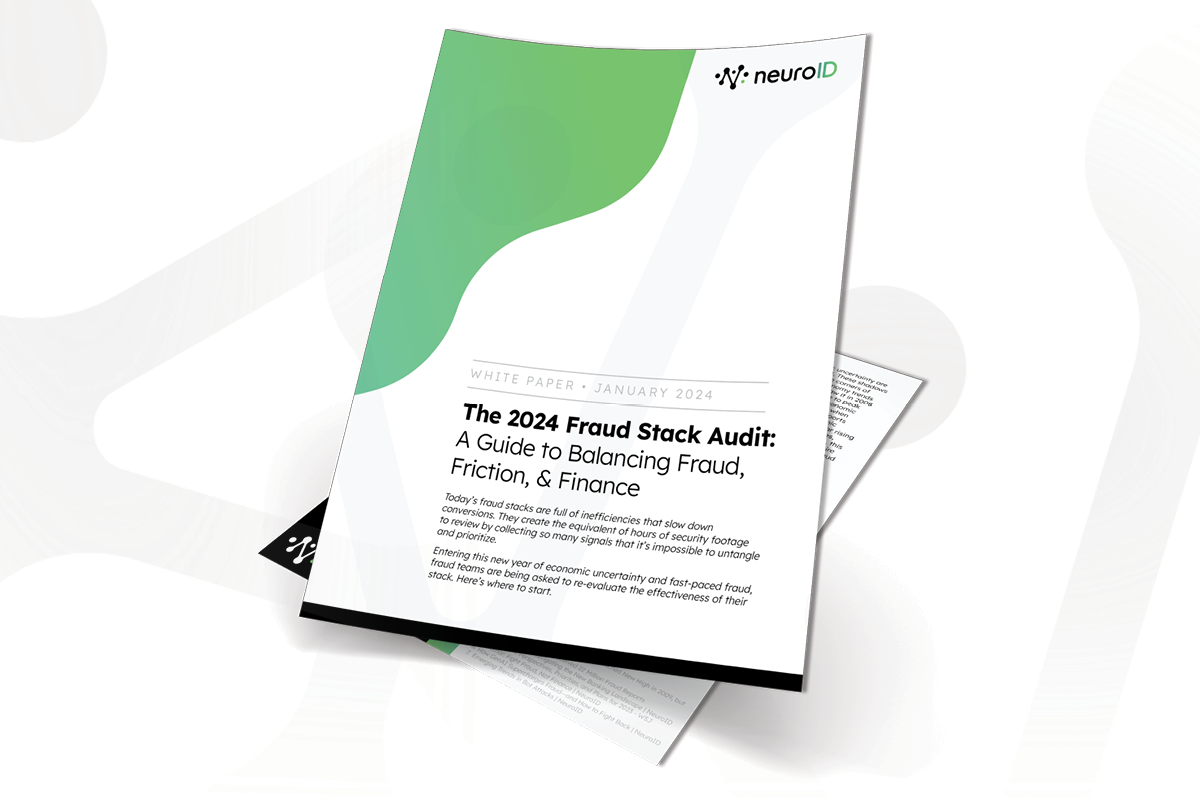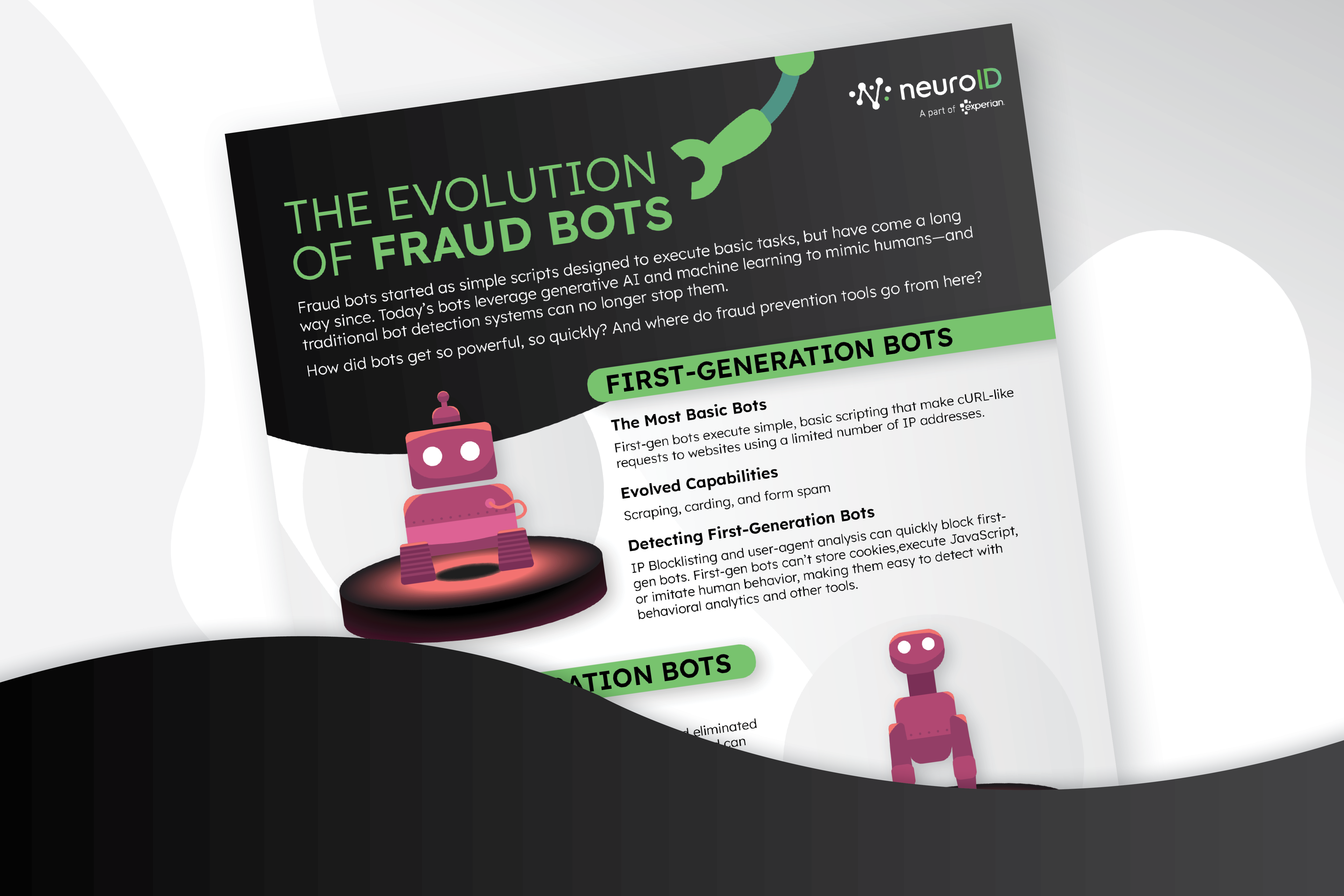
The Experts’ Guide to Fraud Prevention: 3 Must-Haves for Modern Fraud Stacks
Last year, consumers lost a record-breaking $10 billion to fraud. The rise of new, sophisticated fraud tools, including hyper-realistic, genAI-powered social engineering schemes and human-like bots, has made the fraud landscape even more volatile in 2024. These advanced threats have exposed weaknesses in traditional fraud prevention solutions, and experts are looking at whether it’s necessary to completely retool fraud stacks—or simply refine.
Last month’s NeuroID webinar with fraud experts Brian Russell, Sowmya Saiprasad, and Nash Ali highlighted the trends dominating the fraud world, why they’re causing headaches for fraud prevention teams, and what to expect in the future. Here are the biggest fraud stack necessities that Sowmya, Nash, and Brian identified to stay ahead of fast-evolving fraud attacks:
Must-Have #1: Multiple Layers of Detection
Today’s fraud tools and tactics have exposed the vulnerabilities inherent to single-point fraud detection solutions. Once fraudsters figure out how to bypass the rule or system designed to keep them out, they can easily infiltrate, inflicting eye-popping damages and even forcing businesses to completely shut down their online traffic.
The solution is relatively straightforward: add more layers to create stronger, more accurate fraud detection. “In any fraud attack, no matter what technology is being used, you can’t just rely on one tool,” said Brian. “You always have to approach it with a layered security approach because attacks are always evolving. I’m a big proponent of boosting your risk analysis up front using a number of different tools.”
Creating a multi-layered defense is not as simple as adding as many tools as possible to your fraud stack, though. Choosing which layers to implement and where is a strategic, use case-dependent decision.
“There is no single tool to give you a silver bullet for getting rid of fraud,” said Sowmya. “It’s very important to be targeted and ask ‘how are we able to leverage tools very specifically to target the fraud vectors we see most?’”
Must-Have #2: Real-Time Decisioning Capabilities
The real-time revolution among consumers has pushed digital businesses to provide seamless, instant experiences. This doesn’t just apply to onboarding, where it’s no longer feasible to make a customer wait 24 hours to access their account while their application is under review—consumers want instant access across their journey, and it’s driven an ongoing surge in real-time transactions.
In the real-time world, decisioning needs to be instant and deterministic. Adding friction can turn good business away, and leaving fraudsters in limbo can be even more harmful. “The more you delay, you’re giving an opportunity for the fraudster to enter your ecosystem,” said Sowmya. “Fraud enters the ecosystem even before it enters the network. So, once it enters the client’s zone, it’s really hard to mitigate or reduce it.”
Businesses are still adapting to this new reality, and the high-risk landscape has caused many to hesitate to fully embrace real-time solutions. However, according to Brian, it’s not an excuse to continue relying on manual reviews.
“Every second counts. You can’t sit back and manually review everything,” said Brian. “You need automated trigger flags to tell you when fraud is coming in. Even if it doesn’t end up being fraudulent, it’s okay because you flagged it and took a look at it. And when you analyze it, you learn.”
Must-Have #3: Future-Focused Defenses
The evolution of fraud is happening faster than ever. Take hyper-sophisitcated, next-generation bots as an example—after being a rarity only a couple of years ago, next-gen bots are now leading large attacks and fooling even the most trusted bot detection methods. Consequently, there’s an urgent need to upgrade and enhance current fraud prevention solutions.
“Fraud is changing in a very non-traditional sense, and fraudsters are getting savvier by the day,” said Sowmya. “We cannot be complacent and just rely on existing tools and controls. We have to start looking at what else we can do, and stay ahead. Our defenses need to be constantly evolving to counter new threats.”
Fraudsters’ lightning-speed advancement is fueled by the seemingly limitless distribution of accessible fraud tools. In the past, only the most advanced fraudsters had access to the most dangerous tools, but the rise of genAI-powered fraud has made advanced fraud bots more accessible, and, in turn, attacks more widespread.
“AI has caused a surge in deepfakes, fake documents, and certainly bots,” said Nash. “It’s extremely dangerous because those tools are available to anyone who wants them. Everyone’s an automation and scripting expert now—they don’t have to be a programmer.”
Fighting the Future of Fraud
Staying ahead of evolving fraudsters should be at the forefront of every fraud professionals’ mind. Predicting the future of fraud is easier said than done. But there are solutions, including NeuroID behavioral analytics, that have repeatedly proved effective against evolving fraud techniques.
“It’s important to see as much information as possible to detect fraud early on,” said Sowmya. “Making sure that behavioral analytics is in place and constantly looking at users’ actions is very critical.”
For more on stopping today’s biggest fraud threats and preparing for what’s on the horizon, watch the full webinar replay.




